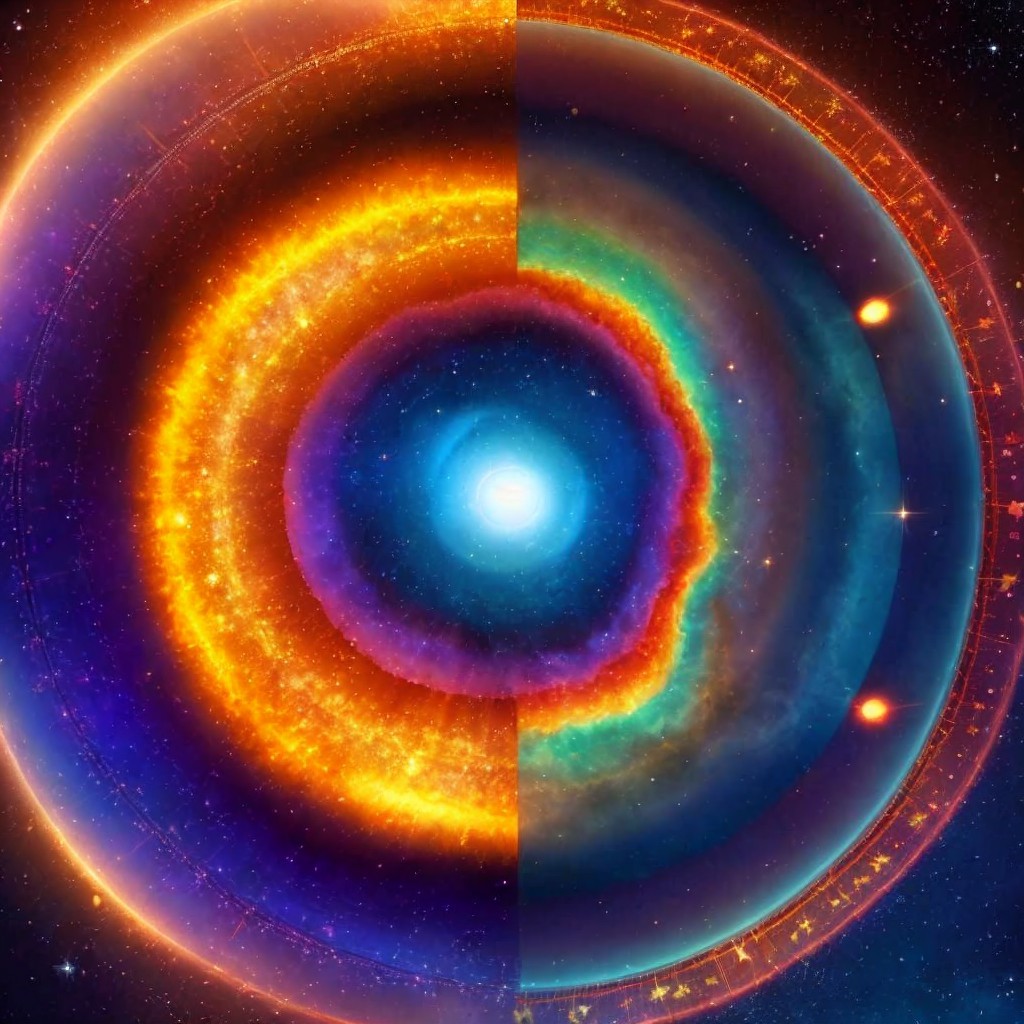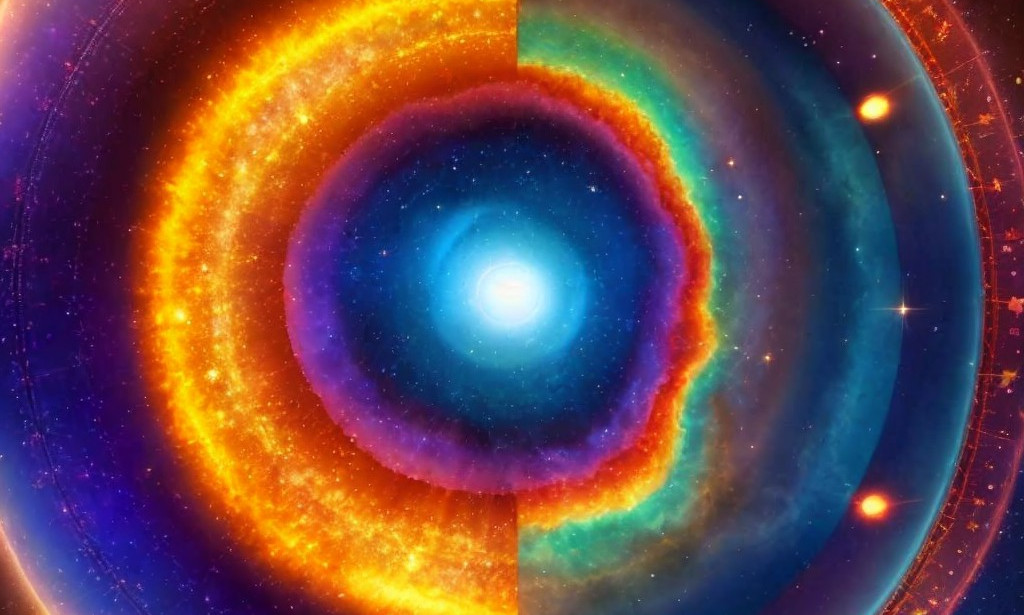
Dreams have fascinated humanity for centuries. From ancient civilizations to modern times, people have sought to understand the mysterious world that comes alive when we close our eyes at night. But what does science say about dream interpretation? Is there a solid basis for analyzing dreams, or is it all just a form of wishful thinking? In this article, we'll explore the scientific research on dream interpretation, delve into the psychology of dreams, and examine the role of brain activity in shaping the meanings of our dreams.
Have an interesting dream to share? Join Questmist to document your dreams, get expert interpretations, and connect with a community of dreamers — Register Now or Login to begin your journey!
Don’t forget to try Questmist’s AI dream interpreter—click here to interpret your dreams!
Understanding the Science Behind Dreams
Dreams are a natural part of the sleep cycle, occurring most vividly during a stage known as Rapid Eye Movement (REM) sleep. But what exactly happens in the brain during this time, and how does it relate to the content of our dreams?
Brain and Dream Connection: How It All Starts
Our brains are incredibly active during REM sleep, even though our bodies remain still. This paradox has intrigued scientists for years. During REM sleep, certain areas of the brain, such as the limbic system (which controls emotions), become highly active. This brain activity is believed to play a crucial role in generating the vivid and sometimes bizarre experiences we call dreams.
The Role of REM Sleep in Dream Formation
REM sleep isn't just a random occurrence; it's a vital part of how our bodies and minds function. Research shows that REM sleep is linked to memory consolidation, emotional regulation, and cognitive processes. The strong connection between REM sleep and dreams suggests that dreams might be more than just random images. They could be a way for our brains to process and make sense of our experiences, emotions, and thoughts.
Neuroscience and Dream Interpretation Techniques
In recent years, neuroscience has offered new insights into how dreams work. Using advanced brain imaging techniques, scientists have been able to observe brain activity during REM sleep, giving them clues about the dream interpretation process. For instance, certain patterns of brain activity have been associated with specific types of dreams, such as nightmares or recurring dreams.
These findings suggest that dream interpretation might have a scientific basis. By understanding how brain activity affects dream meanings, we can begin to piece together the puzzle of what our dreams might be trying to tell us.
Psychological Theories of Dream Analysis
While neuroscience provides a biological basis for dreams, psychology offers a different perspective. Several psychological theories of dream analysis have been proposed over the years, each offering unique insights into the meanings behind our dreams.
Sigmund Freud and the Interpretation of Dreams
One of the most famous figures in the field of dream interpretation is Sigmund Freud. In his seminal work, "The Interpretation of Dreams," Freud proposed that dreams are a window into our unconscious mind. According to Freud, dreams are a way for our repressed desires, fears, and thoughts to surface in a disguised form.
While Freud's theories have been criticized and revised over the years, they laid the groundwork for understanding the psychological aspects of dream interpretation. Freud's idea that dreams have symbolic meanings is still a popular notion today, even if modern psychologists interpret these symbols differently.
Carl Jung and the Collective Unconscious
Another influential figure in dream interpretation psychology is Carl Jung, a former student of Freud. Jung introduced the concept of the "collective unconscious," a reservoir of shared human experiences and archetypes that manifest in our dreams. According to Jung, dreams are not just personal; they are also influenced by universal symbols and themes that resonate with all humans.
Jung's theories of dream interpretation focus on the idea that dreams can help us understand our inner selves and guide us toward personal growth. His approach to dream analysis is more holistic than Freud's, emphasizing the positive and transformative aspects of dreams.
Modern Psychological Theories of Dream Analysis
Today, dream interpretation psychology has evolved to incorporate various approaches. Some psychologists view dreams as a form of problem-solving, where the brain works through issues that we might not fully process during waking hours. Others see dreams as a reflection of our emotional state, with the content of our dreams mirroring our current feelings and concerns.
Regardless of the approach, the underlying principle remains the same: dreams are meaningful, and understanding them can provide valuable insights into our inner world.
What Science Says About Dream Symbolism
Dreams often contain symbols—objects, people, or events that represent something else. But how do we interpret these symbols scientifically? Is there a "dream dictionary" that can unlock the meaning of every dream?
The Challenges of Dream Symbolism
One of the biggest challenges in dream interpretation is the subjective nature of dreams. What one person sees as a symbol of fear, another might see as a symbol of excitement. This makes it difficult to establish a one-size-fits-all approach to dream symbolism.
However, scientific research on dream interpretation suggests that there are some common themes and symbols that appear in dreams across different cultures and individuals. For example, dreams of falling, being chased, or losing teeth are reported by people worldwide, regardless of their background.
Neuroscience's Take on Dream Symbolism
Neuroscience offers a different perspective on dream symbolism. Instead of focusing on the content of dreams, neuroscientists look at the underlying brain activity that produces these images. For instance, research has shown that certain areas of the brain are more active during specific types of dreams, such as those involving fear or anxiety. This suggests that the symbols in our dreams might be linked to the emotional and cognitive processes happening in our brains during sleep.
While this approach doesn't provide a clear "answer" to what each symbol means, it does highlight the complex relationship between brain activity and dream content. Understanding this relationship could eventually lead to more accurate methods of interpreting dream symbolism.
The Science Behind Dreams: Key Takeaways
So, what have we learned about the science behind dream interpretation? Here's a quick recap:
-
REM Sleep and Dreams: Dreams occur most vividly during REM sleep, a stage of sleep characterized by high brain activity. This connection between REM sleep and dreams suggests that our dreams might serve important psychological and cognitive functions.
-
Brain Activity and Dream Meanings: Scientific research on dream interpretation has shown that different types of dreams are associated with specific patterns of brain activity. This indicates that our brains play a crucial role in shaping the content and meaning of our dreams.
-
Psychological Theories of Dream Analysis: The psychology of dreams offers various theories on how to interpret them, from Freud's idea of repressed desires to Jung's concept of the collective unconscious. Modern approaches also emphasize the role of dreams in problem-solving and emotional processing.
-
Dream Symbolism: While dream symbols are highly subjective, there are some common themes that appear in dreams across different cultures. Neuroscience suggests that these symbols might be linked to the brain's emotional and cognitive processes during sleep.
-
Theories of Dream Interpretation: Whether viewed through the lens of neuroscience or psychology, the study of dreams remains a complex and evolving field. While we may not have all the answers yet, the science behind dreams offers valuable insights into how our minds work during sleep.
FAQs About Dream Interpretation
What is the scientific basis for dream interpretation?
The scientific basis for dream interpretation lies in the study of brain activity during sleep, particularly during REM sleep. Research has shown that different types of dreams are associated with specific patterns of brain activity, suggesting that dreams might reflect underlying cognitive and emotional processes.
Can dreams really predict the future?
There is no scientific evidence to support the idea that dreams can predict the future. While some people believe that their dreams have prophetic qualities, most scientists agree that dreams are more likely to be reflections of our thoughts, emotions, and experiences rather than glimpses into the future.
Why do we have recurring dreams?
Recurring dreams are common and often reflect unresolved issues or emotions. From a psychological perspective, these dreams might be a way for the brain to work through problems that haven't been fully addressed in waking life. The specific content of recurring dreams can vary, but the underlying theme is usually consistent.
How do neuroscientists study dreams?
Neuroscientists study dreams using techniques like functional magnetic resonance imaging (fMRI) and electroencephalography (EEG) to observe brain activity during sleep. These methods allow researchers to see which areas of the brain are active during different stages of sleep, providing insights into the processes that generate dreams.
Is dream interpretation considered a science?
Dream interpretation is not considered a science in the strictest sense, as it involves a significant amount of subjectivity. However, the study of dreams incorporates scientific methods, particularly in the fields of neuroscience and psychology, to understand the underlying mechanisms that produce dreams and their potential meanings.
Can everyone interpret their dreams accurately?
Interpreting dreams accurately is challenging because dreams are highly subjective and personal. While some people might feel confident in their interpretations, others might find it difficult to decipher the meaning of their dreams. Consulting with a psychologist or using scientifically-informed dream analysis techniques can help in making sense of complex dreams.
Do all dreams have meaning?
Not all dreams have deep meanings. Some dreams might simply be a reflection of random brain activity during sleep, while others might be more meaningful, reflecting our thoughts, emotions, and experiences. The significance of a dream often depends on the context and the individual’s personal associations with the dream content.
Conclusion
The science behind dream interpretation is a fascinating and complex field that bridges neuroscience, psychology, and personal experience. While there's still much to learn, the research conducted so far provides valuable insights into how our brains create and interpret the world of dreams. Whether you're a skeptic or a believer in the power of dreams, understanding the science behind them can enrich your perspective and offer a deeper appreciation of the mysterious world that unfolds each night.

You must be logged in to post a comment. Please Login or Register .